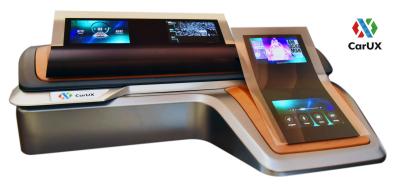The European New Car Assessment Program (NCAP), an independent (and voluntary) automotive safety body is set to introduce new rules in January 2026 that will require vehicles to go back to physical controls rather than touchscreens in order to achieve the NCEP five-star safety rating.
NCAP says that car makers are overusing touchscreens, to the point where almost all key controls of the cars (such as HVAC, wipers, hazard lights and more) are now done via the touchscreen rather than by physical knobs, dials, and buttons. Drivers are reportedly complaining that this is annoying - but also dangerous as it diverts your attention from driving into looking to the screen, to go over menus and choices.
I can personally say that on our new car, a lot of the functions are now controlled via a touch screen - and this is indeed quite annoying. Changing the air condition or choosing a different radio station used to be something easy that you can do without looking at the dashboard - but now it requires much more attention. I would definitely would have preferred physical controls.
The automotive market is believed to be a key market for microLED developers. The advantages of microLED displays (mainly high lifetime, wide temperature range, and high brightness) are especially useful in the automotive industry, and this could be one of the first markets that microLEDs penetrate (together with AR/VR and ultra large-area displays). This new NCAP regulation and the move back from touchscreens to physical knobs could be an important trend to watch, even though it is likely that even with physical buttons and knobs, car makers will want to continue the adoption of large instrument cluster displays and navigation and multimedia displays.
If you want to learn the latest automotive microLED industry trends, join us at MicroLED-Connect! our flagship event in September will cover automotive MicroLEDs, and other application areas, the latest innovation and will be a great place to meet the industry!


